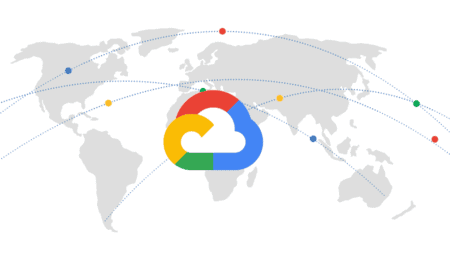Last week the Sibos event, organized by SWIFT, was taking place in Amsterdam. What are the big topics in this world in terms of technological innovations? We spoke with Oracle’s Conor Colleary about what trends he sees and therefore what Oracle is focusing on.
Colleary is VP for Financial Services at Oracle. Financial services is a big business unit within the company. It has solutions for retail and corporate banking, but also deals with financial crime, risk & finance and insurance, for example.
Real-time payments
When we ask Colleary what the biggest theme is during Sibos, he doesn’t have to think long about it. That, without a doubt, is real-time payments. That may not seem that complicated to an outsider, but it certainly is in practice. “Within national borders it is now a reality, the next logical step is to realize this across national borders as well,” he points out. However, going across national borders also involves multiple variables that can make this difficult. Payments have to pass through several points in the payment chain, which have different procedures and regulations in each country. Think of the different clearinghouses a payment has to pass through. But of course, also issues such as exchange rates and the large number of different banks play a role.
Keeping in mind that a real-time payment should be from one account to another within twenty seconds, the reality we outlined above makes this very difficult to achieve. That is, if you still have to do it all manually. This is because the variables we describe above will not change. Sure, ISO standards can help, and it’s a little easier inside the EU than outside (because of the single currency), but you’re still dealing with clearinghouses, banks and the people who work there. When we ask Colleary about what we need to do to make real-time payment also possible across national borders, his answer is clear: “Automation is the answer. If you set that up right, you can make real-time payments across country borders a reality.”
We immediately believe that automation can make real-time payments possible across national borders as well. That has been done for the real-time payments that are already possible within countries. Across national borders, we are still some way from that, Colleary points out. It’s all more complex there, as we’ve already established. So that also means more work to automate things in such a way that everyone is happy with it and it complies with laws and regulations in the different countries. In addition, in this scenario you also have to consider financial crime. It is of course not the intention that you make it easier for criminal money to be siphoned off by automation.
Open banking
A second topic much talked about in the financial sector these days is open banking. This is basically this sector’s interpretation of the API-driven IT environments that are increasingly becoming the norm in the enterprise marketplace. As an example of what Colleary calls the API economy, he gives the embedding of payment capabilities in ERP systems. This enables customers of banks to make payments directly from that system. This is convenient for the customer because they don’t have to open the bank’s environment each time. It also ensures that financial institutions and customers become more intertwined. That, in turn, is ultimately good for those institutions, because it means customers are not as likely to switch. “It makes financial institutions more sticky,” in Colleary’s words.
In addition to embedding in specific systems, an API-driven approach also allows you to better anticipate any challenges that may come up. After all, you can now pull in the data and analyze it. If it is clear that a customer appears to be facing a tough few months due to circumstances, then a bank can choose to pre-emptively give the customer a temporary overdraft.
From a broader perspective, open banking also means, above all, opting for a consumption model in this sector. That is, it is becoming easier and easier to consume the services of financial institutions. In addition, everything must also work intuitively and be available anytime, anywhere. In other words, banks are increasingly about the customer experience. It has to be, just as it is crucial that there is more and more integration with and between systems.
The above sounds very nice, but how does open banking work in practice? “Conceptually this is an excellent idea, driven by demand and regulators, the problem, however, is that there is no general standard for accessing services,” Colleary points out. That is, different banks have different standards. That needs to be resolved first. Colleary does see progress, by the way: “Five years ago there was nothing, now we can already do a lot more, partly because of the new ISO20022 standard.” So there is a good chance that we will start to see some accelerated progress.
Financial crime
The last topic we discuss with Colleary is financial crime. We touched on it briefly above when we discussed the challenges for real-time payments across national borders. When we talk about financial crime in this context, we are talking about organizations and money flows from and between “customers” who do things with the money that are not right. Or obtain it in improper ways. In order to track down these kinds of money flows and organizations, financial institutions have to analyze enormous amounts of data.
This is where this sector still has some catching up to do, we gather from Colleary’s words. “The biggest challenge is the number of false positives,” he states. This mainly has to do with the fact that the institutions operate mainly rule-based. A bit like how a traditional Endpoint Protection (EPP) package works with signatures. You get few useful insights with such a rule-based approach because it doesn’t work smart enough. “Better algorithms are needed,” according to him. This also means using AI/ML. Not that it will then all be solved immediately, by the way. The relationship between all the different components within complex transactions is still not easy to understand. That does not make it easy to do a flawless KYC study, for example.
On this point, too, Colleary sees that things are moving in the right direction. Most banks are already using these kinds of modern tools, he points out. It was all a lot of manual work before, now there is a lot more automation and the accuracy has gone up as well. Oracle itself has a very strong proposition in the area of countering financial crime, Colleary adds. This allows them to help financial institutions take the right steps toward the goal they have set in this area.
Ultimately, of course, there is still a responsibility for the end customers. They obviously just have to do their homework, or due diligence, as well. In fact, with the rapid globalization of organizations today, banks can still help. “A bank like ING can have a branch in the country where a new customer is located. That can then provide information about the potential customer,” Colleary gives as an example. At the end of the day, this is also interesting for banks, because this way they can add additional services to their offerings. That makes them even more relevant in the market.
Explosion of innovation continues
The above three themes indicate that there is plenty happening in the financial world in terms of innovation. The underlying systems and software being used obviously play an important role in this. Overall, Colleary sees very strong growth taking place within the financial sector. “That was not the case during the initial fintech explosion,” he states. Back then, they didn’t respond accurately enough. Meanwhile, banks are also working much better with each other, he points out. That’s also very important. We wonder if the same will happen soon around standardization for open banking initiatives.
Be that as it may, banks are a lot better at it now than they were about 5-10 years ago. That’s good to see. They have to eventually, of course. Banks are still of systemic importance to organizations. So they also more or less demand to keep up with the times. The financial crisis of 2008 meant that for a long time banks were mainly concerned with limiting risks. That seems to have paid off. That is, banks seem to be weathering the recent and current crises well, though of course they were of a different order than the one in 2008. Financial institutions will now have to focus fully on countering financial crime. Think about acting quickly and accurately against specific countries. So financial institutions will still have the innovation agenda well and truly full in the coming years.




















